Reptile & Amphibian
News Blog
Keep up with news and features of interest to the reptile and amphibian community on the kingsnake.com blog. We cover breaking stories from the mainstream and scientific media, user-submitted photos and videos, and feature articles and photos by Jeff Barringer, Richard Bartlett, and other herpetologists and herpetoculturists.
Wednesday, July 31 2013
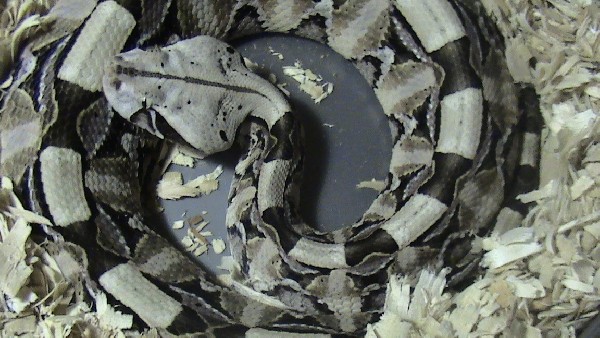 When firefighters entered a burning home in northern Utah, they found a roomful of snakes, some venomous.
From ABC News:
Among the snakes that were found were some of the most deadly, including five albino western diamondbacks and a Gaboon viper.
“The Gaboon viper is considered one of the most dangerous snakes in the world,” said Brad Hunt of the Utah Division of Wildlife. “It has very long fangs and very potent venom.”
The Gaboon Viper is indigenous to Africa, and anti-venom for the snake is not readily available in the United States.
Having venomous snakes is illegal in the state of Utah, and even native snakes must be registered and have permits. It is suspected that the owner, whose name has not been released but who officials believe is a snake professional or breeder, smuggled at least the Gaboon viper from out of state.
He was cited for possession of illegal animals, and Animal Control was in contact with an attorney to consider options for pressing any misdemeanor charges.
The snakes that he owned legally will be returned to him, officials said.
An animal control officer on the scene noted "the snakes were kept in 'incredible condition' and in 'immaculate facilities.'"
Read the full story here.
Photo: Gaboon viper by kingsnake.com user viperkeeper.
Tuesday, July 30 2013
 In a new interview with National Geographic, Dr. Michael Hutchens discusses the hazards of working in areas where there are dangerous species of invertebrates and vertebrates, both on land and water -- and how to protect yourself. During the interview, he tackles a topic that comes up constantly on kingsnake.com: the misuse of the terms "poisonous" and "venomous" when discussing snakes.
From the interview:
First let me address an issue that is a pet peeve of many biologists, and that is the difference between the terms “venomous” and “poisonous.” Many lay people use the terms interchangeably, when, if fact, they are very different. A poison is typically ingested, whereas venom is injected or actively introduced into the victim’s body. An example of the former is the cane toad (Bufo marinus)—potential predators of the toad are poisoned by toxic secretions produced by glands on the skin when they try to ingest the animal. An example of the latter is the king cobra (Ophiophagus hannah), a large predatory snake that literally injects venom through its syringe-like fangs that are connected to venom glands. Some venomous species, such as rear-fanged snakes and gila monsters (Heloderma suspectum, one of the world’s few venomous lizards) must chew in order to introduce the venom, since they have no efficient way of injecting it. In addition, some poisons can be introduced through means other than ingestion, as for example, when someone with a cut on their hand picks up a poison dart frog, and the poison enters the blood stream through a skin abrasion.
Hitchens and NatGeo go on to discuss other herpetofauna as well as sea life and birds. It's well worth a read.
Monday, July 29 2013
Check out this video "Soft Shelled Turtle," submitted by kingsnake.com user freymann.
Submit your own reptile & amphibian videos at http://www.kingsnake.com/video/ and you could see them featured here or check out all the videos submitted by other users!
Friday, July 26 2013
 So, a python apparently capable of eating a T. rex got out of its cage at a Dartmouth frat house this week, and to hear the national media tell it, we're just lucky Western civilization survived.
Oh, wait. Rather read the real story? Try this from the Hanover, NH, Valley News:
A small dog known to wear pink collars and matching sweaters made national headlines Wednesday after she discovered a ball python that had escaped on Dartmouth College’s campus last week.
Daisy, a 4-year-old Jack Russell/Dachshund mix, found the 3-foot-long snake while walking with her owner outside Tabard House, a coed Dartmouth fraternity, around 8 p.m. Tuesday night.
The snake’s disappearance had been picked up by the national news media when it went missing from its tank at the fraternity last week. Tabard President Connie Gong, a Dartmouth student who is watching the snake this summer, first noticed it was gone on Thursday.
The story erupted online again Wednesday, as the Associated Press picked up the scent. Other news outlets produced their own articles, including the Atlantic Wire, which dubbed the pooch “Hero Dog.”
[...]
[W]hile Hanover Police sought the public’s help in locating the snake, advising people to use caution if they came across it, [veterinarian Christine] Pinello said humans and animals alike were in little danger. Adult pythons can grow up to 5 feet, and they’re not poisonous. A python like the one that escaped Tabard would only eat small animals like mice, Pinello said.
“A 3-foot python really isn’t big,” Pinello said. “The python is probably scared.”
Hanover Police Captain Frank Moran said his department was aware that the snake had been found and the snake is now a “non-issue.”
He offered a joke, too: “The only thing that’s concerning is that now it’s 9 feet long.”
The Dartmouth reported Tuesday night that Gong said the python — named Lyude, and presumably still only 3 feet long — has been returned to its cage.
Read the full story here.
Photo: James M. Patterson/Valley News
Thursday, July 25 2013
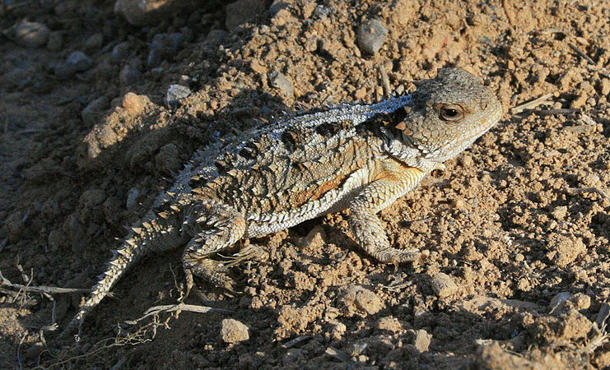 From Yahoo News Canada:
A group of biologists working in Saskatchewan's Grasslands National Park are trying to save one of Canada's rarest and perhaps strangest creatures — the greater short-horned lizard.
This lizard, which can be found anywhere between New Mexico and southwestern Alberta, has a rather unique and strange defense mechanism. It shoots its own blood from its eyes to ward off an attacker.
The lizard has been considered endangered on Canada's Species At Risk list since 2007, mainly due to habitat loss from "ongoing oil and gas development, proliferation of roads, proposed mineral development, and an increased human presence."
Read the story here, and watch video of this lizard's bloody defenses under the jump.
Continue reading "Scientists work to save lizard"
Wednesday, July 24 2013
 An alligator handler in Florida had his arm broken in two places when a thousand-pound gator bit him during a demonstration at a party.
From the Sun-Sentinel:
Will Nace, a volunteer handler, was bitten by the alligator Lunge while performing during a private party at Native Village on Saturday, said park co-owner Ian Tyson.
The alligator grabbed Nace's arm and dragged him into a pond where the two spun around. Another trainer jumped into the gated pit and manage to set Nace's arm free.
Surge Achille, a party-planner at the park, said the frightening incident took less than a few minutes.
"It was surrreal. It was like your mind couldn't catch up with what was happening," Achille said. "I kept thinking it wasn't real, but it was."
Nace will require multiple surgeries and skin grafts. Read the full story here.
Photo: Sun-Sentinel
Tuesday, July 23 2013
 It's not often the Daily Mail and Gawker both pick up a story about a snake, but this one -- from the "you can't make this stuff up" category -- took the prize.
As reported in the Times of Israel:
According to a Channel 10 report, the man, a resident of central Israel, paid his parents a visit in the northern town of Nofit. While sitting on the john, he was rudely and painfully interrupted when a snake appeared and bit his penis. The victim “ran from the room in horror” and went to Haifa’s Rambam Medical Center for treatment, according to the report.
A blood test found that the snake was not venomous. The man was in good condition, but doctors decided to keep him under medical supervision.
Read it here .
Monday, July 22 2013
Check out this video "Sulcata Tortoise Trouble," submitted by kingsnake.com user rugbyman2000.
Submit your own reptile & amphibian videos at http://www.kingsnake.com/video/ and you could see them featured here or check out all the videos submitted by other users!
Friday, July 19 2013
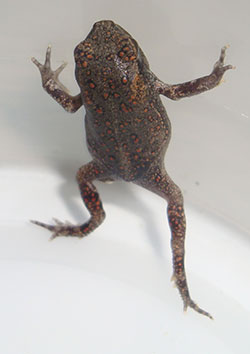 It's Friday, so let's be happy! And all you have to do to get that way is read this good news from the Houston Zoo, where their efforts to keep Houston toad populations healthy and thriving are paying off.
From the zoo blog:
We have been very successful in raising the tadpoles and subsequent toadlets that we kept back from our releases. Of all the tadpoles that hatched from the eggs, we only lost 5! We now actually have too many toadlets (200+) to keep here at the facility! In the coming weeks, we will once again work with researchers from Texas State University and USFWS to release these little guys back out into the wild. This will mark our fourth release of the year and is the first time ever that we have released three different life stages: eggs, juveniles, and adults!
Read the rest here!
Photo: Houston Zoo
Thursday, July 18 2013
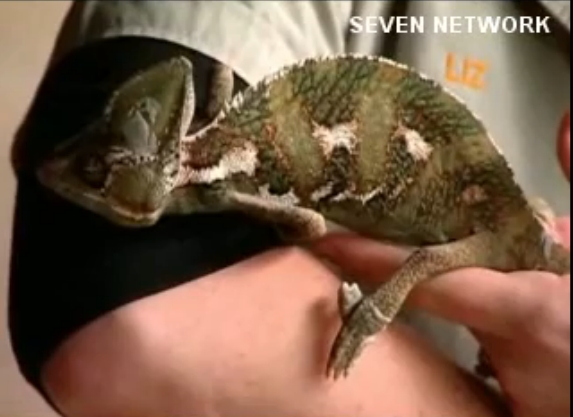 Dozens of animals, including a number of rare lizards and a baby alligator, were stolen from the Australian Reptile Park last week.
From News.com.au:
There are concerns for the reptiles as some are sensitive and require high maintenance, and without proper care there is a significant risk of them not surviving.
Australian Reptile Park senior curator Liz Vella said they were unsure exactly which animals and how many were missing.
"We haven't been able to get into the park to do an animal count because the police are still taking fingerprints and investigating,'" she said.
She said the animals stolen were all part of the park's educational collection.
"These are the ones we take out to show our visitors,'" she said.
"They are very rare and specialised - they aren't dangerous but they need our care. A lot of them are also used in our regional breeding programs with other zoos.'"
Ms Vella said the animals taken were a mix between exotic and native and included geckos, lizards and a baby alligator.
"We're devastated. We love these animals like they are our own,'" she said.
"They all have their own personalities and we are really worried about them."
Read more here. Additional information and a video report are here.
Photo: Seven Network
Wednesday, July 17 2013
 Never underestimate the power of a snake.
From NBC Washington:
A snake slithered its way into some equipment at a power substation, knocking out electricity to thousands in Arlington late Saturday night.
Read more here.
Tuesday, July 16 2013
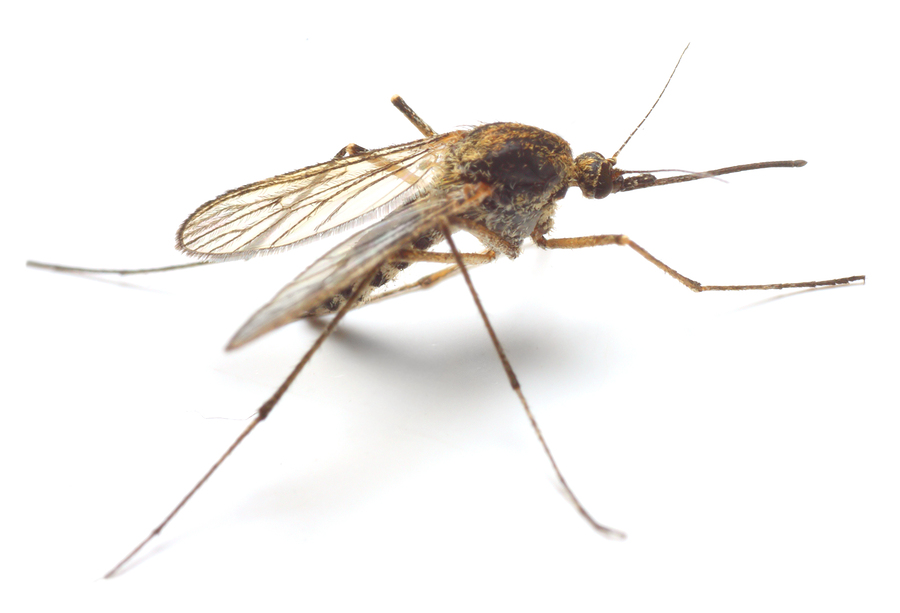 Climate change is making it easier for snakes to successfully prey on baby birds -- who then fail to grow up and eat the mosquitoes that transmit West Nile Virus.
From Futurity.org:
University of Missouri biologist John Faaborg says that farmers, public health officials, and wildlife managers should be aware of complex indirect effects of climate change in addition to the more obvious influences of higher temperatures and irregular weather patterns.
“A warmer climate may be causing snakes to become more active and seek more baby birds for food,” says Faaborg.
“Although our study used 20 years of data from Missouri, similar threats to bird populations may occur around the world. Increased snake predation on birds is an example of an indirect consequence that forecasts of the effects of climate change often do not take into account.”
In the heart of Missouri’s Ozark forest, cooler temperatures usually make snakes less active than in the edge of the forest or in smaller pockets of woodland. However, during abnormally hot years, even the interior of the forest increases in temperature.
Since snakes are cold-blooded, warmer temperatures make the reptiles more active and increase their need for food. Previous studies using video cameras found that snakes are major predators of young birds.
Read the rest here.
Monday, July 15 2013
Check out this video "Spring Salamander Migration," submitted by kingsnake.com user rugbyman2000.
Submit your own reptile & amphibian videos at http://www.kingsnake.com/video/ and you could see them featured here or check out all the videos submitted by other users!
Friday, July 12 2013
Given the sheer tonnage of snakes Bryan Grieg Fry has seen up close and personal in his decades as a venom researcher, the accolade "coolest snake I've ever seen" has to impress us at kingsnake.com just as much it did as the guys at NatGeo.
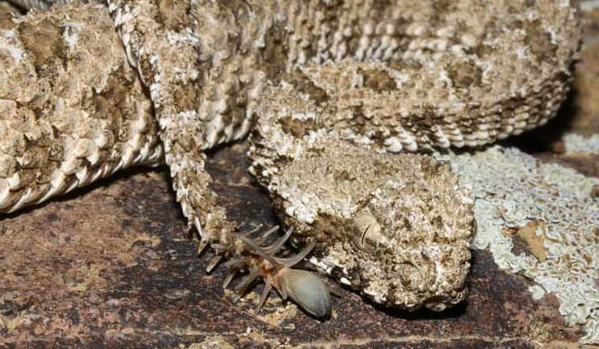
From National Geographic:
The creature he’s talking is new to science, having only been described in 2006. It’s the spider-tailed viper (Pseudocerastes urarachnoides) and it is aptly named.
The tail is bizarre. If you saw a close-up photo of it, you’d struggle to believe that there was a snake at the other end. There’s a large orange or grey bulb at the tip, and the scales just before that are bizarrely long and thin. Together, these features look a bit like the legs and abdomen of a spider or their close relatives, the solpugids or ‘camel spiders’.
The resemblance is even more striking when the snake moves. It keeps the rest of the tail still, while moving the tip in a disconcertingly jerky way.
Read the rest, and watch video, here.
Photo: Omid Mozaffari/National Geographic
Thursday, July 11 2013
After a two-year rehab stint at the Institute for Marine Mammal Studies in Gulfport, Mississippi, Big Mama -- a 245-pound loggerhead sea turtle -- has moved into her new digs at SeaWorld Orlando, where she'll be helping to educate people about her species and threats to wildlife.
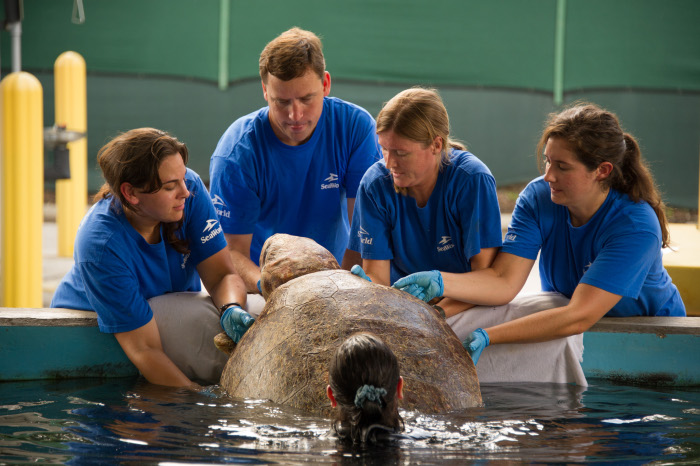
From BayNews9:
Big Mama was transported to SeaWorld Orlando from Mississippi where she had been receiving care since she was rescued after an oil spill in 2010 off the coast of Louisiana. Big Mama suffered severe bite wounds to her front and hind flippers making it difficult for her to swim properly. In 2012, Big Mama was deemed non-releasable by U.S. Fish and Wildlife Service, and due to space limitations, IMMS could no longer care for Big Mama.
Read more here.
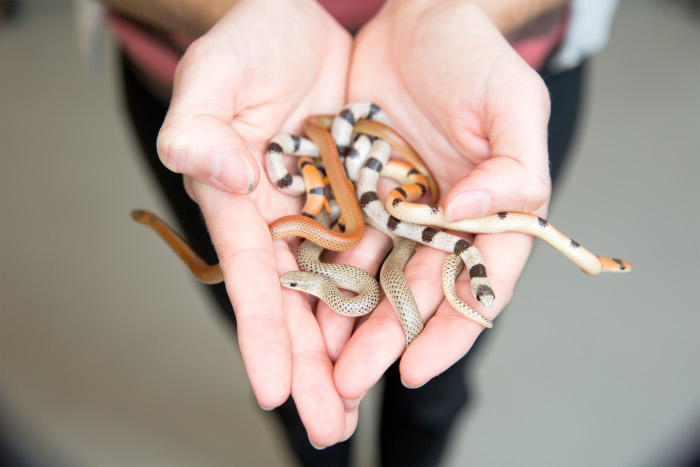 A University of Michigan biologist may have unlocked the secret of polymorphism and survival in snakes.
From the University of Michigan:
If a mimicry system offers protection from predators, then why hasn't evolution eliminated the "failed mimics," such as ground snakes sporting color patterns that don't remotely resemble a coral snake? That's the puzzle that University of Michigan evolutionary biologist Alison Davis Rabosky has spent the last four years trying to solve.
"Logic predicts that non-mimics should by eaten preferentially by predators and, given enough time, you should end up with a single color type in the population. So the widespread co-occurrence of mimic and non-mimic color patterns is a puzzling and longstanding evolutionary paradox," said Rabosky, an assistant research scientist in the Department of Ecology and Evolutionary Biology and an assistant curator of herpetology at the Museum of Zoology.
While Rabosky and colleague Christian L. Cox of the University of Virginia don't claim to have fully resolved the paradox, they did gain insights that help explain the persistence of non-mimic color patterns in ground snakes, especially rare patterns. It turns out that if you're a ground snake, displaying a rare color pattern also provides an evolutionary edge.
Read the rest here... definitely worth the click!
Photo: Eric Bronson/University of Michigan
Wednesday, July 10 2013
How did the ancestors of land animals make it out of the sea? New research comparing tiger salamanders and mudskipper fish tells the tale.

From Phys.org:
Paleontological examinations of the invasion of land by vertebrates suggest that limb-like appendages likely originated in aquatic environments, but direct comparisons of the functional consequences of using early limbs with digits, rather than fins, for terrestrial locomotion had not previously been performed. Salamanders are used to model the general body form of early tetrapods (e.g., Paleozoic amphibians) since their morphology has remained essentially unchanged for at least 150 million years. Mudskippers are similar to early fossil precursors of the tetrapods: they use "crutching" movements on land similarly to the hypothesised locomotion of Ichthyostega, and their pectoral fins are similar to elpistostegalids, such as Tiktaalik.
Read more here.
Photo: Sandy Kawano/Phys.org
Tuesday, July 9 2013
Dozens of Australian species of the worm-like snakes classified as Scolecophidia have been identified by scientists in Australia.
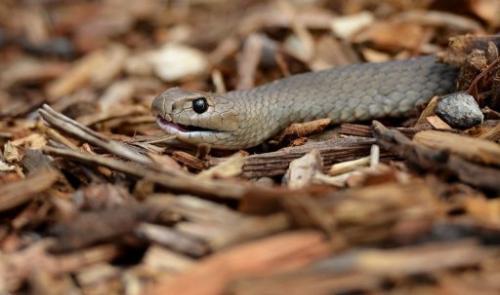
From Phys.org:
Researchers from France, Australia and the United States analysed the genomes of 741 animals from 27 recognised species in a subgroup known as Australian blind snakes.
The data suggest the number of species is "at least two times the current number of recognised, nominal species," said a summary of the results, published in the Biological Journal of the Linnean Society.
Snakes are divided into two major groups: Scolecophidia, which are generally less than 30 centimetres (12 inches) long, and the more common Alethinophidia, which include boas, pythons, cobras and vipers.
Read more here.
Photo: Phys.org
Monday, July 8 2013
Check out this video "Road Cruising for snakes," submitted by kingsnake.com user naturebreak.
Submit your own reptile & amphibian videos at http://www.kingsnake.com/video/ and you could see them featured here or check out all the videos submitted by other users!
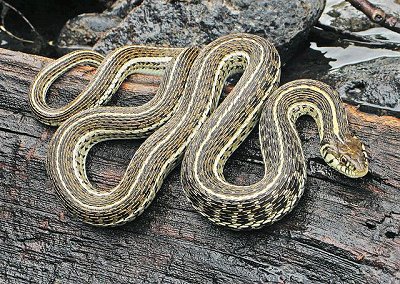 Once thought to be extinct, six northern Mexican garter snakes were discovered last month near the Gila River and another three later in the month.
From the Denver Post:
Doug Hotle, curator of reptiles and amphibians at the BioPark, said one of the snakes found last month was a young female, which indicates the wild population is reproducing.
"Based on what we've seen so far, this is a very successful group of snakes living in ideal wetland habitat," he said. "We can do on-the-ground study to find out more about these rare garters and what their needs are here in New Mexico."
The snakes at the BioPark are expected to go on public display soon.
The northern Mexican garter snake is a candidate for federal endangered species protection. It was once found throughout Arizona, southwestern New Mexico and parts of Mexico. Scientists said it had been nearly 20 years since the last confirmed sighting of the snake in New Mexico.
Hotle said the discovery marks a huge step forward for his team.
Read the rest here.
Photo: Jeff Servoss / U.S. Fish & Wildlife Service
Tuesday, July 2 2013
 The city of San Francisco is on the hook for hundreds of thousands of dollars in court-ordered penalties related to destruction of endangered snake and frog species on city-owned land.
From SF Weekly:
The judgment is a victory for the Wildlife Equity Institute and other environmental organizations, which sued the city in 2011 for violations of the federal Endangered Species Act. The nonprofit claimed that the city was killing two protected species, the San Francisco Garter Snake and the California Red-Legged Frog, by draining the 18-hole Sharp Park Golf Course throughout the years.
U.S. District judge Susan Illston denied the city's defense that it wasn't killing the animals, noting that "as a result of construction activities and golf course maintenance operations, all Frogs, all Snakes, and 130 egg masses will be subject to incidental take." As a result, Illston ordered San Francisco to pay $386,000 that will go toward paying the institute's attorney fees.
Read the rest here.
Photo: Victor Abbley/SF Weekly
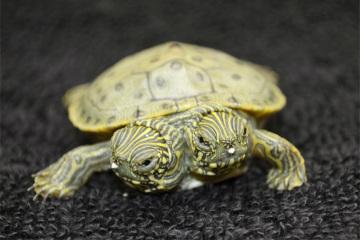 Forget the Texas two-step. A two-headed Texas cooter turtle is the star of the San Antonio Zoo.
From Time:
The emerald green turtle, which arrived on June 18 and went on display Tuesday, has two noggins conjoined near the neck. Zoo officials named the Texas cooter Thelma and Louise, in tribute to the 1991 movie starring Susan Sarandon and Geena Davis about a female duo on the run. The turtle, which is actually a pair of unseparated twins, is healthy and eating with both heads.
Read more here.
Monday, July 1 2013
Check out this video "Garter Snake Eating Toad," submitted by kingsnake.com user naturebreak.
Submit your own reptile & amphibian videos at http://www.kingsnake.com/video/ and you could see them featured here or check out all the videos submitted by other users!
|



